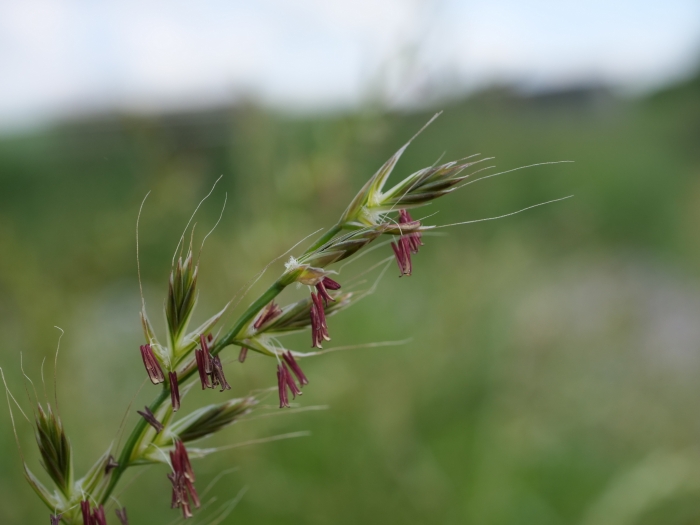Italian Ryegrass
(Lolium multiflorum)
Italian Ryegrass (Lolium multiflorum)
/
/

Wolfgang Jauch
CC BY 4.0
Image By:
Wolfgang Jauch
Recorded By:
Copyright:
CC BY 4.0
Copyright Notice:
Photo by: Wolfgang Jauch | License Type: CC BY 4.0 | License URL: http://creativecommons.org/licenses/by/4.0/ | Rights Holder: Wolfgang Jauch | Publisher: iNaturalist | Date Created: 2019-06-12T18:19:01-07:00 |























Estimated Native Range
Summary
Lolium multiflorum, commonly known as Italian ryegrass or annual ryegrass, is an herbaceous grass that is native to temperate Europe, including the Mediterranean region. It exhibits a range of growth habits, functioning as an annual, biennial, or short-lived perennial. This grass typically reaches a height of 2 to 3 feet (0.6 to 0.9 meters) and has a bunch-forming growth form. Italian ryegrass has glossy, dark green leaves and produces a dense, spike-like inflorescence that is not particularly showy but is characteristic of the grass family. It flowers in late spring to early summer.
Italian ryegrass is valued for its rapid growth and adaptability to a variety of temperate climates and soil types, including those with poor fertility. It is widely used in agriculture for silage and as a cover crop to improve soil structure and prevent erosion. In ornamental settings, it can add texture to garden designs. However, it requires regular mowing to maintain a tidy appearance. In cultivation, it prefers full sun to light shade and can tolerate a range of soil moisture conditions. While it is not particularly drought-tolerant, it does well with moderate watering. It is important to be aware that Italian ryegrass can become a noxious weed, particularly in arable areas, and is known to be invasive in some parts of the world, outcompeting native species and disrupting local ecosystems.CC BY-SA 4.0
Italian ryegrass is valued for its rapid growth and adaptability to a variety of temperate climates and soil types, including those with poor fertility. It is widely used in agriculture for silage and as a cover crop to improve soil structure and prevent erosion. In ornamental settings, it can add texture to garden designs. However, it requires regular mowing to maintain a tidy appearance. In cultivation, it prefers full sun to light shade and can tolerate a range of soil moisture conditions. While it is not particularly drought-tolerant, it does well with moderate watering. It is important to be aware that Italian ryegrass can become a noxious weed, particularly in arable areas, and is known to be invasive in some parts of the world, outcompeting native species and disrupting local ecosystems.CC BY-SA 4.0
Plant Description
- Plant Type: Grass
- Height: 0.2-0.5 feet
- Width: 0.6-0.75 feet
- Growth Rate: Rapid
- Flower Color: N/A
- Flowering Season: Spring, Summer, Winter
- Leaf Retention: Deciduous, Semi-deciduous
Growth Requirements
- Sun: Full Sun
- Water: Medium
- Drainage: Medium, Slow
Common Uses
Erosion Control, Groundcover, Low Maintenance
Natural Habitat
Native to temperate Europe, including the Mediterranean region
Other Names
Common Names: Italian Ryegrass, Rye Grass
Scientific Names: , Lolium multiflorum, Lolium ambiguum, Lolium aristatum, Lolium compositum, Lolium elongatum, Lolium gaudinii, Lolium italicum, Lolium italicum subsp. muticum, Lolium italicum var. aristatum
GBIF Accepted Name: